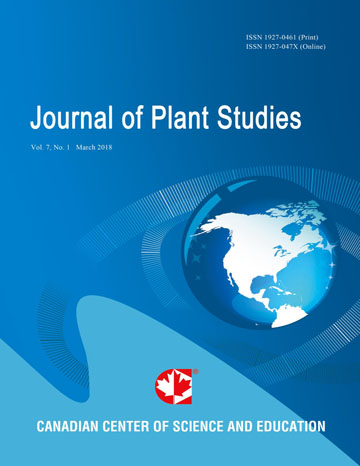Seasonal Variation in Growth, Leaf Physiology and Fruit Development in Kinnow, a Mandarin Hybrid
- R. P. Dalal
- B. Beniwal
- S. Sehrawat
Abstract
In the early bearing stage of Kinnow, the magnitude of vegetative growth was maximum in spring flush (47.08%) followed by in the rainy season flush (42.07%), whereas, the winter fall flush bore only minor flush of the annual vegetative growth (10.85%). Similarly, the spring flush leaves showed the minimum values of leaf sclerophylly i.e. leaf area, leaf fresh and dry weight, specific leaf weight, density of foliar tissue and leaf tissue succulency as compared to rainy and winter fall flushes leaves, implying that spring season growth most serves as a sink to developing fruits. Growth of the Kinnow fruit in phase 1st which last for one month up to April is primarily due to the increase in peel thickness which contributes about 70% of the fruit radius. In phase 2nd, growth of the fruit is due to the increase in pulp tissue thickness contributing 80% of the fruit radius, increased fruit fresh weight, moisture content and decreased peel thickness up to September. Major gain in fresh weight of the fruit is from May-October, contributing 80.14% of the total fruit weight. Thereafter, phase 3rd of maturation and ripening starts with comparatively decreased rate of increase in fruit weight and size, and slightly increased rate of dry weight, peel thickness and reduced moisture percentage. This study will be further helpful in increasing the input efficiency of resources for improving fruit size and reducing fruit drop in kinnow (K) mandarin.
- Full Text:
 PDF
PDF
- DOI:10.5539/jps.v2n1p72
Index
- AGRICOLA
- CAB Abstracts
- CABI
- CAS (American Chemical Society)
- CNKI Scholar
- Elektronische Zeitschriftenbibliothek (EZB)
- Excellence in Research for Australia (ERA)
- Google Scholar
- JournalTOCs
- Mendeley
- Open policy finder
- Scilit
- Standard Periodical Directory
- Technische Informationsbibliothek (TIB)
- WorldCat
Contact
- Joan LeeEditorial Assistant
- jps@ccsenet.org
